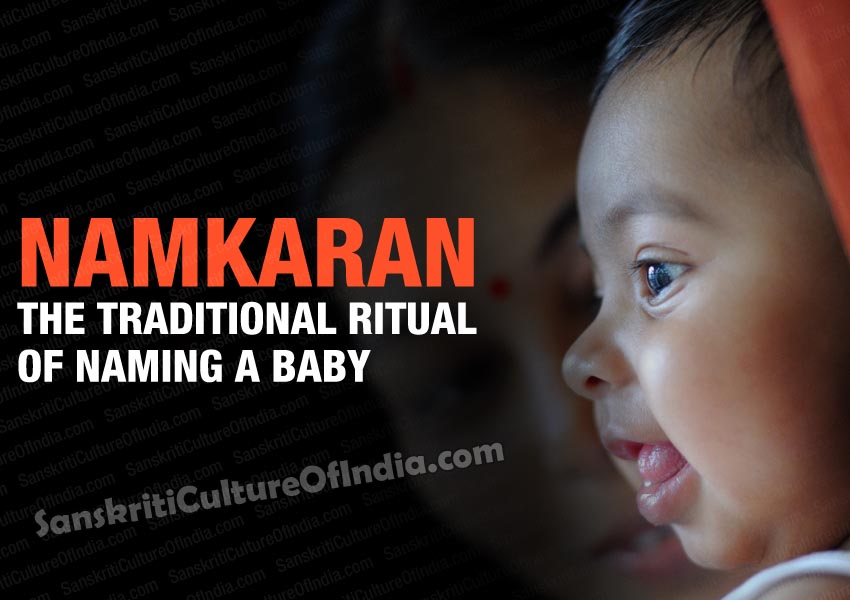Namkaran is one of the most important of the 16 Hindu ‘samskaras’ or rituals. In the Vedic traditional, ‘Namkaran’ (Sanskrit ‘nam’ = name; ‘karan’ = create) is the formal naming ceremony performed to select a newborn’s name using traditional methods and astrological rules of naming. This is generally a happy ritual – with the tensions of childbirth now over, the family comes together to celebrate the birth of the child with this ceremony. Namkaran is also called ‘Palanarohan’ in some traditions, which refers to putting a child into the cradle (Sanskrit ‘palana’ = cradle; ‘arohan’ = onboard).
When is Namkaran Held?
Traditionally, the Namkaran ceremony is conducted after the ‘Jatakarma’ samskara, which is performed at the time of the birth of the child. Nowadays, with more and more births taking place in the hospital, this ritual has become a part of the Namkaran ceremony, which is performed within a few weeks of the baby’s birth.
Strictly speaking, the naming ceremony should be held 11 days after birth-immediately preceding the ‘Sutika’ or ‘Shuddhikaran’ period when the mother and child are confined to intensive post-partum or post-natal care. However, the 11th day is not fixed and can be decided by the parents based on a priest or an astrologers advice, and can extend even up to the baby’s first birthday.
How is the Namkaran Ritual Performed in Hindu Tradition?
The mother and father start the ritual with pranayama, prayers and mantra chanting in presence of the family priest. In absence of the father, the grandfather or uncle can perform the ritual. The priest performs the ritual with prayers to the Gods, Agni, the god of fire, the elements, and the spirits of the ancestors. Rice grains are spread on a bronze ‘thali’ or dish and the father writes the chosen name on it using a gold stick while chanting the God’s name. Then he whispers the name into the child’s right ear, repeating it four times along with a prayer. All others present now repeats a few words after the priest to formally accept the name. This is followed by the blessings of the elders along with gifts and ends with a feast with family and friends. Usually, the family astrologer also presents the child’s horoscope at this ceremony.
How is the Hindu Baby’s Name Selected?
Hindu families count on Vedic astrology to arrive at the name of a child. The initial letter is considered very auspicious and is decided according to the ‘Janam Nakshatra’ or birth star of the child, the position of planets at the time and date of birth, and the moon sign. Sometimes a name is selected based on the name of the deity the month, or even a dead ancestor. In sum, there are 5 general principles of naming: Nakshatranam (by lunar asterism); Masanam(according to month of birth); Devatanama (after the family deity); Rashinama (according to Zodiac sign); and Samsarikanama (the worldly name), as an exception to all the above.
It is traditionally believed that a boy’s name should have letters in even numbers (2, 4, 6, 8) and a girls should consist of odd numbered letters (3, 5, 7, 9), 11 being the best for both genders.
~ Subhamoy Das










